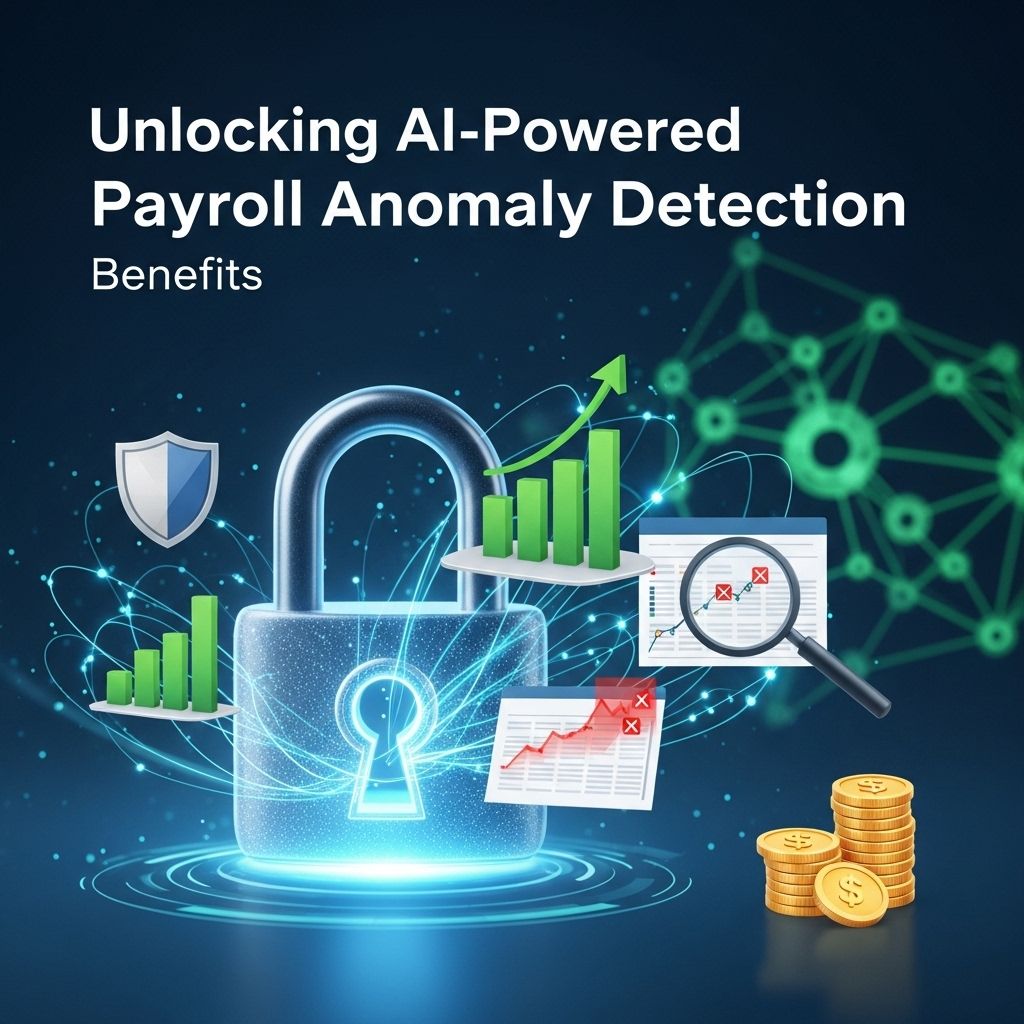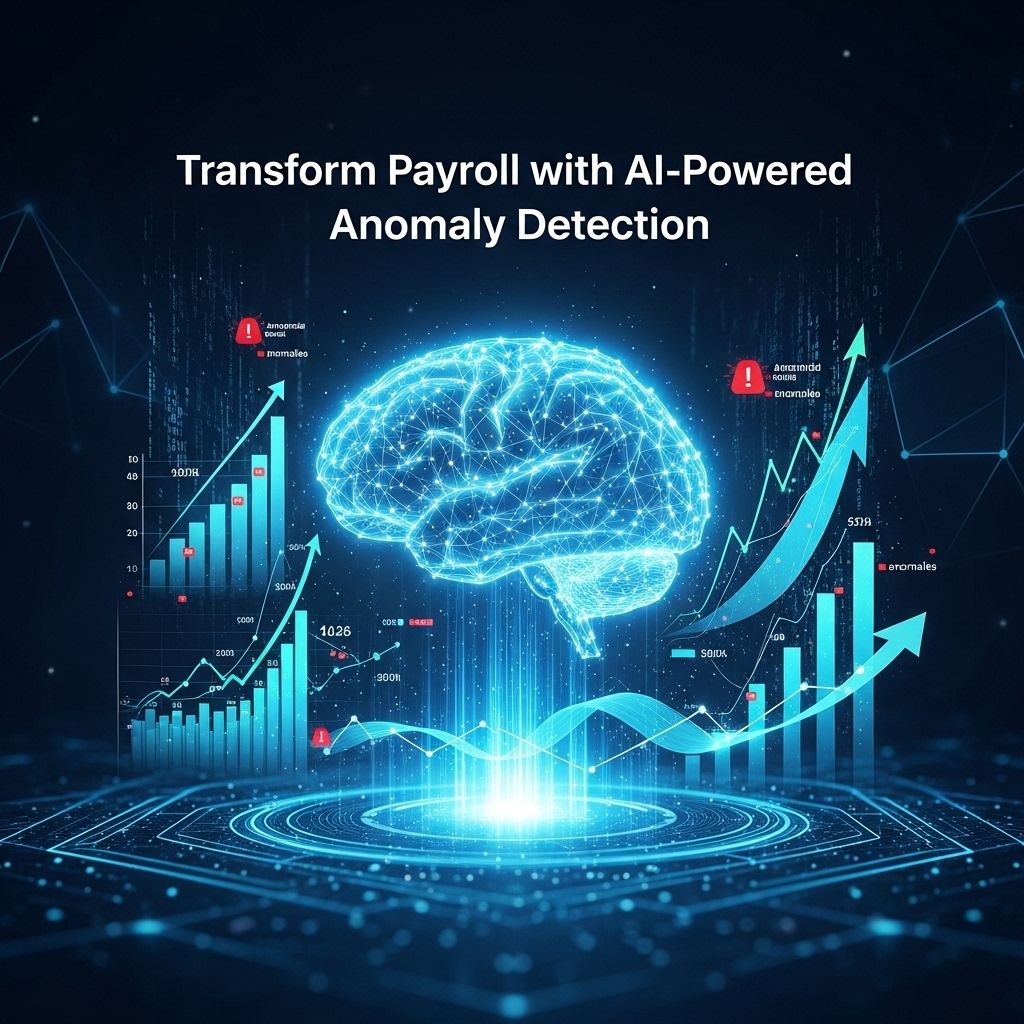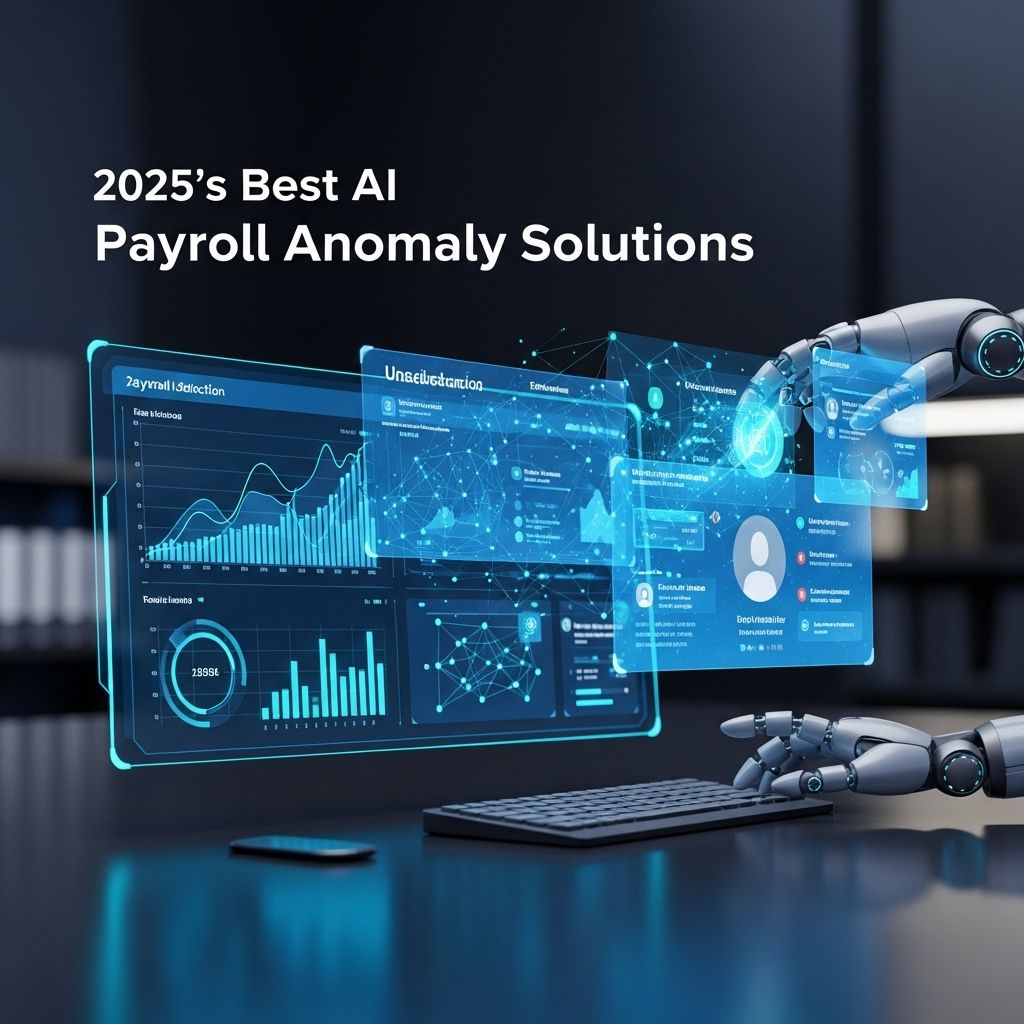Unlocking AI Benefits for Payroll Anomaly Detection
Discover how AI-powered payroll anomaly detection can enhance accuracy, save costs, and streamline your payroll processes.

In today’s fast-paced business environment, organizations are increasingly turning to technology to enhance their operational efficiency. One of the most significant advancements in this area is the integration of artificial intelligence (AI) in payroll systems. AI-powered payroll anomaly detection offers companies a groundbreaking way to identify discrepancies and errors in payroll processes that could potentially lead to significant financial losses. In this article, we will explore the numerous benefits of AI-driven payroll anomaly detection and how it can transform the way organizations manage their payroll operations.
Table of Contents
Understanding AI-Powered Payroll Anomaly Detection
Before delving into the benefits, it is crucial to understand what AI-powered payroll anomaly detection entails. This technology utilizes machine learning algorithms and data analysis techniques to monitor payroll data continuously. It identifies patterns and flag deviations that may indicate errors, fraud, or other anomalies. By analyzing historical payroll data, AI systems can establish a baseline for normal payroll activities and detect anything that falls outside this norm.
The Importance of Anomaly Detection in Payroll
Payroll is a critical function in any organization, and maintaining its accuracy is essential for several reasons:
- Ensuring employee satisfaction and trust
- Maintaining compliance with labor laws and regulations
- Preventing financial losses due to fraudulent activities
- Protecting the organization’s reputation
Key Benefits of AI-Powered Payroll Anomaly Detection
1. Enhanced Accuracy and Efficiency
Traditional payroll processes are often manual and prone to human errors. AI-powered systems significantly enhance accuracy by automating data entry and processing. The intelligence built into these systems ensures that calculations are performed consistently and correctly. This leads to:
- Fewer payroll discrepancies
- Reduced time spent on corrections
- Increased overall efficiency
2. Real-Time Monitoring and Alerts
AI systems can monitor payroll transactions in real-time, enabling organizations to detect anomalies as they occur. This proactive approach allows for timely interventions before issues escalate. Important features include:
- Instant notifications for payroll anomalies
- Dashboards with real-time analytics
- Historical data analysis for trend identification
3. Fraud Detection and Prevention
Payroll fraud is a serious concern for organizations, impacting both finances and employee morale. AI-powered detection systems can identify unusual patterns indicative of potential fraud, such as:
- Unusual increases in payroll expenses
- Multiple payments to the same employee within a short period
- Discrepancies between hours worked and hours paid
4. Cost Savings
By preventing payroll errors and fraudulent activities, organizations can save significant amounts of money. The cost savings can be categorized as follows:
| Type of Savings | Estimated Cost Savings |
|---|---|
| Prevented Fraud | $50,000 annually |
| Reduced Administrative Costs | $30,000 annually |
| Improved Compliance | $20,000 annually |
5. Improved Compliance and Reporting
With ever-evolving labor laws and tax regulations, staying compliant can be a challenge. AI systems facilitate compliance by:
- Tracking changes in regulations automatically
- Generating compliance reports effortlessly
- Ensuring accurate and timely tax submissions
6. Better Employee Experience
Errors in payroll can lead to employee dissatisfaction. AI-powered anomaly detection systems help to ensure that employees are paid accurately and on time. This contributes to:
- Higher employee morale
- Increased trust in the HR department
- Lower turnover rates due to job satisfaction
Integration with Existing Systems
The transition to AI-powered payroll anomaly detection does not mean that organizations must overhaul their entire payroll systems. Many AI solutions can integrate seamlessly with existing payroll software and tools, providing an additional layer of intelligence without disrupting current operations. Key integration points include:
- Connecting to HR management systems
- Utilizing APIs for data sharing
- Customizing dashboard views for different stakeholders
Challenges and Considerations
While the benefits of AI-powered payroll anomaly detection are substantial, organizations should also be aware of potential challenges:
- Data quality issues: Ensuring the quality of input data is crucial for accurate anomaly detection.
- Change management: Employees may require training to adapt to new technologies.
- Cost of implementation: Initial costs may be a barrier for some organizations.
Strategies for Successful Implementation
To successfully implement AI-powered payroll anomaly detection, organizations should consider the following strategies:
- Conduct a thorough needs assessment to determine specific requirements.
- Engage stakeholders early in the process to gain buy-in and support.
- Choose a reputable vendor with experience in payroll solutions.
- Provide comprehensive training for employees on the new system.
Conclusion
AI-powered payroll anomaly detection represents a significant leap forward in how organizations manage their payroll processes. By leveraging advanced technologies, companies can enhance accuracy, improve efficiency, and safeguard against fraud. As the workforce continues to evolve, those who adopt intelligent payroll solutions will be better positioned to thrive in a competitive landscape. Investing in AI technology is not just an operational improvement; it’s a strategic move towards building a more resilient future.
FAQ
What is AI-powered payroll anomaly detection?
AI-powered payroll anomaly detection is a technology that uses artificial intelligence algorithms to identify irregularities or errors in payroll data, helping businesses ensure accurate employee compensation.
How can AI improve payroll accuracy?
AI can improve payroll accuracy by analyzing large data sets to detect patterns, flagging discrepancies, and minimizing human errors that can occur during manual payroll processing.
What are the benefits of using AI for payroll anomaly detection?
The benefits include reduced payroll errors, increased efficiency, cost savings, enhanced compliance, and the ability to quickly address potential fraud or discrepancies.
Is AI-powered payroll anomaly detection suitable for all businesses?
Yes, AI-powered payroll anomaly detection can be tailored to fit businesses of all sizes, from small startups to large enterprises, making it a versatile solution for payroll management.
How does AI handle data privacy in payroll systems?
AI systems are designed with data privacy in mind, implementing strict security measures and compliance with regulations, such as GDPR, to protect sensitive employee information.
Can AI detect all types of payroll anomalies?
While AI can identify many common payroll anomalies, such as overpayments and underpayments, its effectiveness depends on the quality of the data and the sophistication of the algorithms used.


